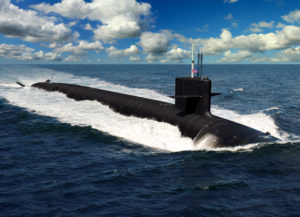
While it has fixed the bad welds that plagued the program last decade, BWX Technologies [BXWT], Lynchburg, Va., is still having trouble manufacturing common missile compartment tubes for Columbia-, Virginia- and Dreadnought-class submarines, the company’s CEO said this week. “[W]e continue to have some struggles with the missile tubes program,” Rex Geveden, BWXT's chief executive, said Monday in the company’s second quarter earnings call with investors. “[W]e did experience some cost creep in that program last year and we brought…

 By
By 










